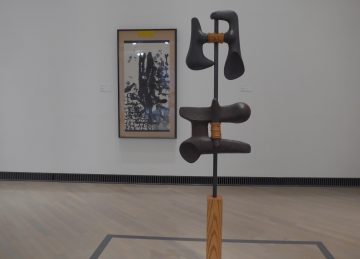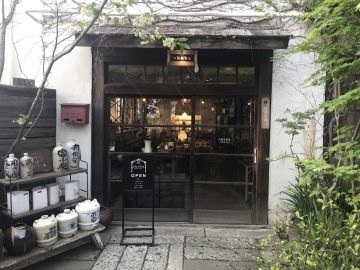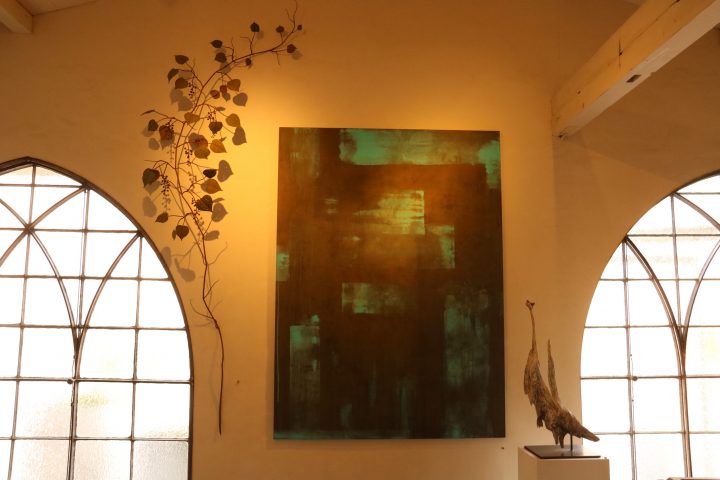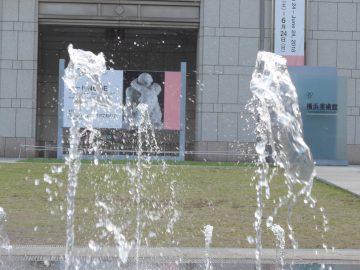"56th Venice Biennale International Art Exhibition" Report Part 3
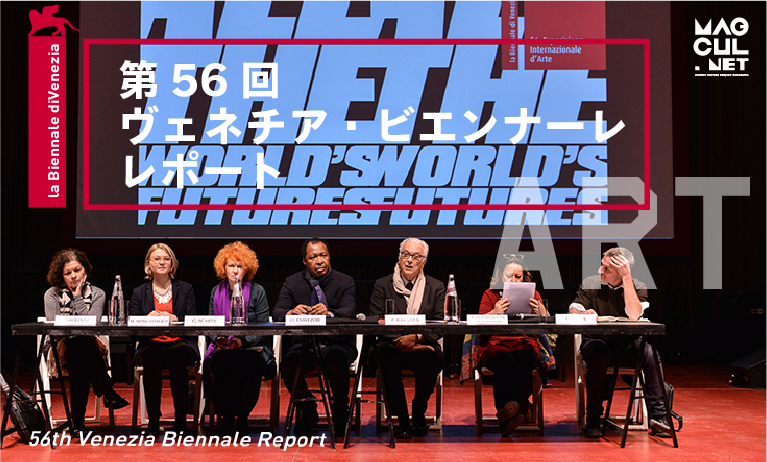
The 56th Venice Biennale International Art Exhibition closed on November 22nd after a period of about seven months. This year's exhibition started about one month earlier than usual to coincide with the opening of the Milan Expo, but the number of visitors during the exhibition recorded about 501,000, 24,000 more than the previous international art exhibition in 2013. There were more than 8,000 interviews and reports by domestic and international media (2,650 of which were in Italy and 5,450 were from overseas media), and the exhibition was widely reported not only in major art magazines around the world but also in daily newspapers, and its popularity on social media has also been reported (in particular, the number of Twitter subscribers on the final day reached 450,000, a 79% increase from the previous year, and Instagram was introduced one month before the opening and currently has 28,000 subscribers).
On the other hand, the official announcement on the final day mentioned not only the number of exhibitors, but also various events that serve as forums for discussion, a track record of exchanges with students and educators who will be the creators of the future, and the new development of the Biennale, such as the collaboration with Google, "Venice Biennale Online," which makes full use of the latest IT technology, and "Collateral Events" (simultaneous exhibitions), which are increasing in number and attracting attention every year. In this final MAGCUL.NET report, we will introduce these "continuations of the Biennale." We will also look back on the collateral events, particularly the exhibition planned by M+ (Museum Plus), a large public art museum under construction in Hong Kong, and the joint exhibition of Indian and Pakistani artists that was realized at the request of a private foundation. Finally, we will inform you of the future plans of the two representatives of the Japanese Pavilion, who answered our interview questions in the first report.

The final day of the 56th Venice Biennale International Art Exhibition
Photo by Andrea Avezzù Courtesy: la Biennale di Venezia
Nurturing budding viewers and artists who will shoulder the "future of the world"
Paolo Baratta, director of the Venice Biennale, said that he would like to evaluate this international art exhibition on the further deepening and enrichment of the exchange of knowledge and creative possibilities brought about during the exhibition, paying particular attention to the number of journalists, critics, and young people participating, especially since 1999, when the exhibition recorded a record of about 200,000 visitors. In the breakdown of visitors, after the number of media, the target group, "young people and students," who accounted for 30% of the visitors this time, was clearly stated, and many staff members were seen at the venue accommodating student groups. This is also the result of a project called the "Biennale Session," which encourages universities and art academies around the world to view the Venice Biennale, and this year it attracted many participants not only from universities and art academies in Italy but also from universities abroad (a total of 3,518 people from 78 universities, of which 24 were from Italy and 54 from abroad).
Venice has also produced important movements and artists in art history, and at this year's Biennale, 60 students from the Academy of Fine Arts of Venice, founded in 1750, are participating in the production of works by Hans Haacke, a world-famous conceptual artist among the exhibiting artists, and a performance by Adrian Piper, winner of the Golden Lion. In addition to the various events held every day at the "Red Theater" in the Giardini venue, which we reported on last time, the international conference "Creative Time Summit 2015" was held at Teatro alle Tese in the Arsenale venue, where more than 100 speakers, including artists, activists, teachers, theorists, and politicians, discussed art education and other topics.

Viewers at the 56th Venice Biennale International Art Exhibition (Giardini Venue)
Photo: Alessandra Chemollo Courtesy: la Biennale di Venezia
"Venice Biennale Online" - Enjoy the festival even after it closes
For those who couldn't go to Venice this time, or those who went but were overwhelmed by the number of exhibitions, please try out the "Venice Biennale Online" jointly developed by the Venice Biennale and the Google Cultural Institute. The "Cultural Institute" is a free online service provided by Google that digitally archives exhibitions and collections from museums and art galleries around the world, making them freely searchable. The Venice Biennale version has now been developed. In addition to the venues of the special exhibition (Arsenale and Giardini), the names of the national pavilions of 70 countries are listed, and by simply clicking "Start" (in Japanese) on the first page of each, you can enjoy slides of photos along the route of the exhibition or the set theme. In addition to operations that allow you to enjoy the view of the venue in 360 degrees, you can also watch performances at each venue that you were unable to see because the date and time were set, and videos of explanations by curators. In Venice, a booth where visitors can enjoy the online Biennale will be open until January 23, 2016 at Palazzo Giustinian, where the Biennale Management Foundation's secretariat is located.
Collateral Event #1
"Zeng Jianhua THE INFINITE NOTHING" Exhibition
In various spaces on the main island of Venice, there has been an increase in "collateral events," such as special exhibitions named after countries or administrative districts, held at the same time as the Venice Biennale, such as the national pavilions at the Giardini. Hong Kong is one of the administrative districts that has been participating in this collateral event format since 2001. This year, the Hong Kong Pavilion was located opposite the main entrance of the Arsenale, and featured a solo exhibition by Tsang Kin-wah (born 1976 in Shantou, China, based in Hong Kong). This exhibition is co-organized by the Hong Kong Arts Development Council (ADC) and M+ (Museum Plus), a new large-scale public art museum that is garnering attention. M+ is a museum specializing in visual culture that is scheduled to open in 2018 in the West Kowloon Cultural District, a two-kilometer stretch of Hong Kong's Victoria Harbour coast lined with skyscrapers. It is said that its exhibition space will be five times that of the main building of the Museum of Modern Art (MoMA) in New York. The museum's curatorial team chose Zeng to represent Hong Kong in Venice.
Zeng is an artist who mainly develops wallpaper and video installation works using text as material. In Japan, he has exhibited at the Aichi Triennale in 2010 and the Mori Art Museum MAM Project in 2011. In his new work for Venice, Zeng will present a video installation titled "THE INFINITE NOTHING" (literally "infinite nothing"), which dynamically utilizes the space of each of the four exhibition rooms, and expands on his recent research into Nietzsche's atheism and faith. Zeng, a Christian, was inspired by Nietzsche and goes on a journey to find "uncertain ultimacy" inspired by themes from Buddhism and Western philosophy, as well as contemporary film. The viewer crosses a "river" as a metaphor for faith, and is confronted by "light" and "words" pouring down, and a "door" that appears before them. Will the viewer be able to find the "eternal return" that is suggested to be beyond it, by their own "free will"? This special exhibition stylishly expresses the modern confusion of an individual's journey to find their "true self" in the name of faith or religion in an ever-evolving civilized society, and is also linked to the water city of Venice.I am interested to see the trends in expression in Hong Kong, including at M+.
○ “Zeng Jianhua THE INFINITE NOTHING”
Date: May 9th - November 22nd, 2015
Venue: Campo della Tana, Castello 2126-30122, Venice, Italy
Co-host: The Hong Kong Arts Development Council (HKADC), West Kowloon Cultural District M+
Collateral Event #2
"My East is Your West" Exhibition
Another concurrent exhibition worth mentioning is "My East is Your West," a joint exhibition by Indian and Pakistani artists, organized by a private foundation. Since independence from British colonialism, the two countries have been plagued by repeated wars and religious conflicts, and the longest defensive wall in the world has been built on their border. Shilpa Gupta (born 1976 in Bombay, India, and based in Mumbai, India, which changed its name to Mumbai in 1995) has been creating works that visualize the various ill effects and futility of international society and politics. This time, she presented a performance in which she silently drew the border line with carbon paper on a 3,394-meter-long white cloth, which is 1/1000th the length of the border between the two countries. Meanwhile, Rashid Rana (born 1968 in Lahore, Pakistan, and based in Lahore) measures the notion of the temporality of existence and place through digitally processed photographs and videos. The exhibition used large monitors and livestreaming functions to allow viewers in the exhibition rooms in Lahore and Venice to experience meeting each other in real time. In addition to the fact that artists from both countries, who are increasingly gaining opportunities for international activity, presented their doubts about the state of their home countries and ways to overcome them, there were also reports praising Feroze Gujral, the female director of the Gujral Foundation, who called for their collaboration, for uniting India and Pakistan and displaying a vision of the future that South Asia desires at Venice, the world's largest contemporary art festival.


My East is Your West(2015) at the 56th Venice Biennale by Rashid Rana.
Photo by Mark Blower
○ “My East is Your West”
Venue: Palazzo Benzon, San Marco 3927, Venice, Italy
Date: May 6th - October 1st, 2015
Organized by: The Gujral Foundation
The future of the Japan Pavilion's representative artists and curators, starting from Kanagawa
Finally, here is more about the Japan Pavilion's "Key in the Palm" exhibition, which MAGCUL.NET interviewed said was inspired by the exhibition in Kanagawa.
Although the pavilion did not even manage to win an award, photos of the exhibition made the front page of local Italian newspapers and it was well received, with leading European and American art newspapers describing it as a must-see exhibition.
Each report will be updated on the Japan Pavilion's special website and will be available to view even after the event has concluded.
The curator who represented Japan, Hitoshi Nakano, is currently working at KAAT Kanagawa Arts Theatre, where he is currently preparing a cutting-edge exhibition that will showcase contemporary Japanese artists active both in Japan and overseas from Kanagawa.
At the same time, he has been asked to give report sessions on the Venice Biennale from all over the country, contributing to the development of both artists and curators who will become future representatives of the Japan Pavilion.
For more information on artist Chiharu Shiota's recent activities, please refer to her official website and the latest exhibition information at Galerie Daniel Templon, the major French gallery to which she is affiliated.
In particular, her participation in the Venice exhibition has led to her being selected to exhibit at the Sydney Biennale (starting March 18, 2016). MAGCUL.NET will continue to pay close attention to and support Shiota in the hopes of seeing what kind of works she will present at this international art exhibition, which began in 1973 and was the first biennale in the Asia-Pacific region!

The venue on the final day Photo by Andrea Avezzù Courtesy: la Biennale di Venezia
Report author: Iida Mami (art historian)
